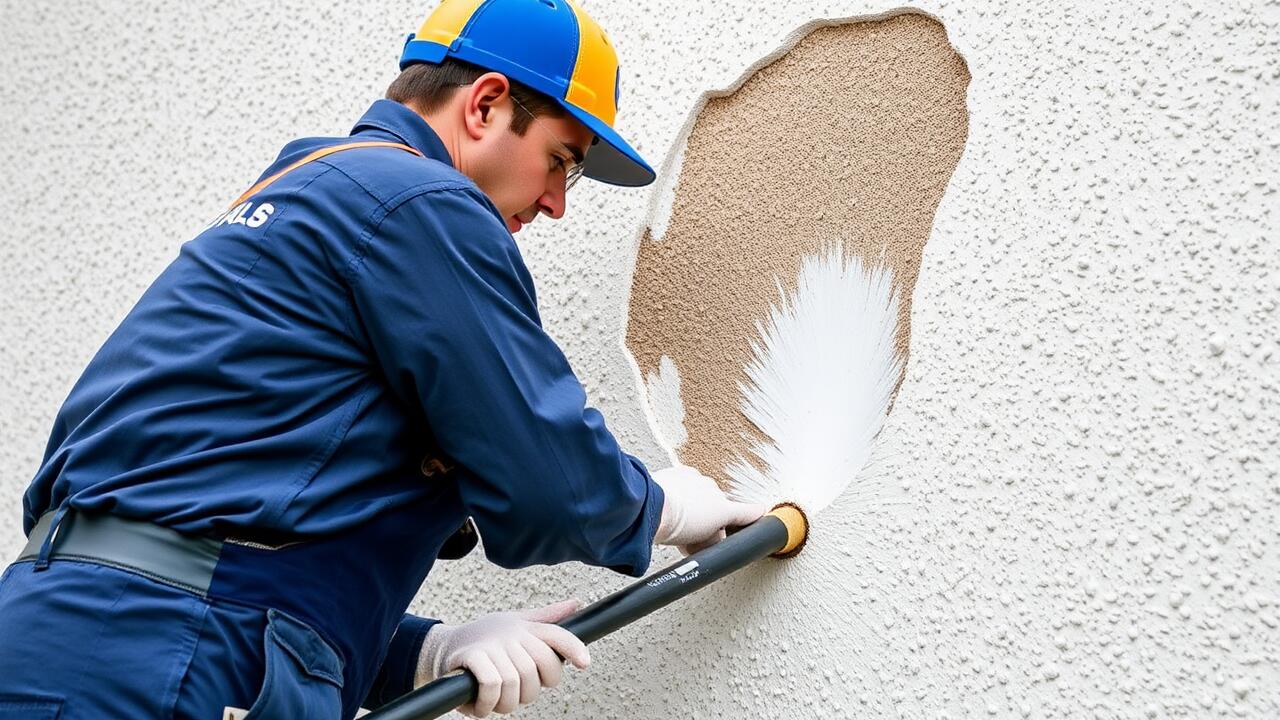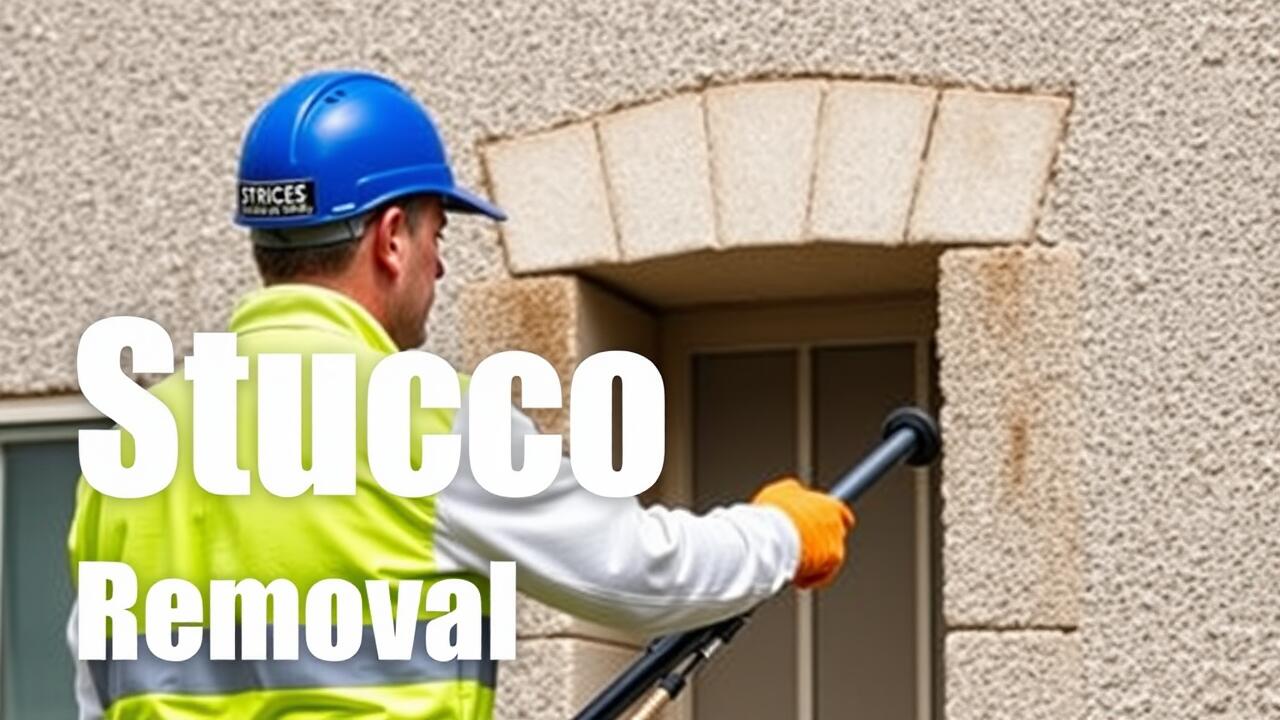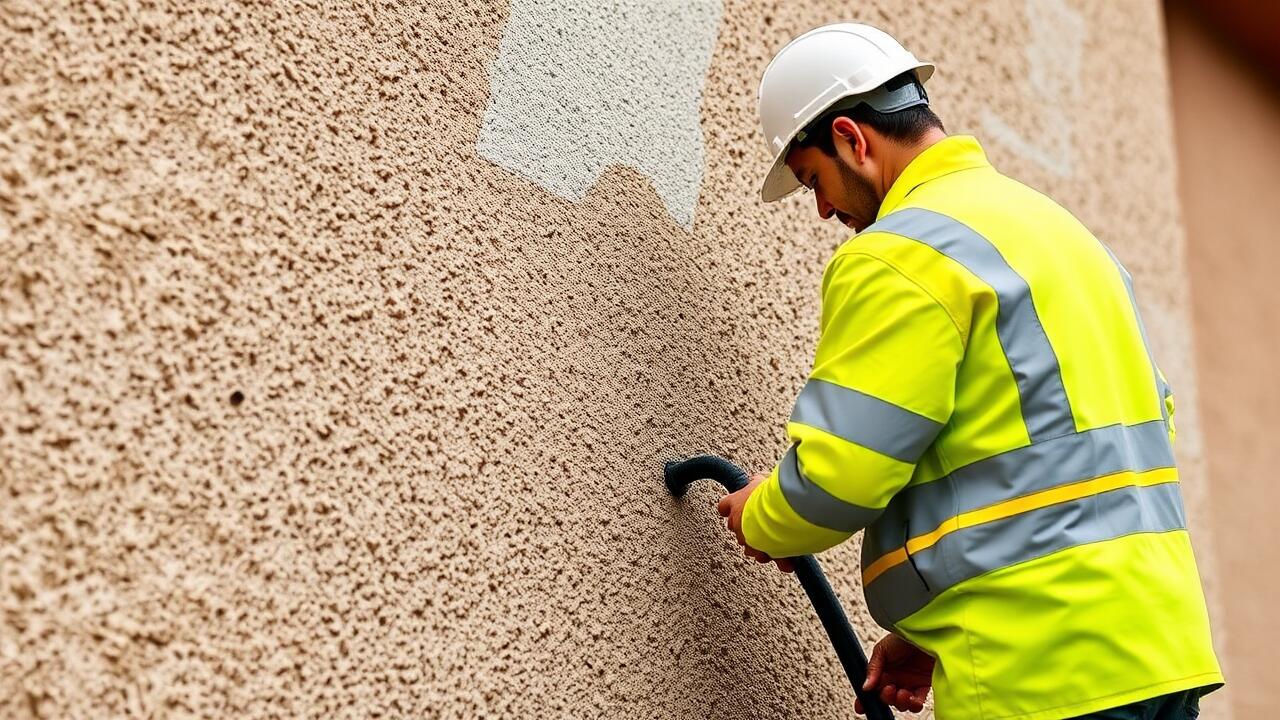
The Role of Pry Bars in Stucco Removal
Pry bars serve as essential tools in the process of stucco removal. Their flat, angled blades allow users to easily get beneath layers of stucco, making it simpler to detach the material from surfaces. The sturdy construction of these tools provides the leverage needed to break apart stubborn areas. For projects such as stucco removal in Downtown Los Angeles, Los Angeles, having a reliable pry bar can significantly streamline the task, allowing for quicker progress and reducing the risk of damage to underlying structures.
When selecting a pry bar for stucco removal, it's crucial to consider the size and shape. Longer bars may offer more leverage, while shorter ones allow for more control in tight spaces. The narrow edges of the pry bar should fit well into the joints of the stucco, facilitating the lifting and prying process. Taking into account the specific needs of a project in a bustling urban environment like Downtown Los Angeles, Los Angeles, will ensure that the right tool is chosen for effective and efficient work.
Choosing the Best Pry Bar for the Job
Selecting the right pry bar for stucco removal can significantly affect the efficiency of the task. Look for a pry bar with a length that allows for adequate leverage without compromising maneuverability. A wider blade can offer better support against the stucco surface, minimizing damage to the underlying material. Brands known for their durability often provide models specifically designed for heavier-duty jobs like stucco removal.
In the context of areas such as Stucco Removal Tarzana, Los Angeles, environmental conditions can influence your choice. Tools designed to resist rust and corrosion are essential, especially in humid conditions. Additionally, consider the weight of the pry bar; a lighter bar may be easier to handle over extended periods, while a heavier model can provide additional force when needed. Always prioritize comfort and grip to reduce strain during lengthy projects.
Considerations for Handle Design and Grip
Handle design and grip play a crucial role in the effectiveness and comfort of hand tools used for stucco removal. A well-designed handle can make it easier to apply the necessary force while reducing the risk of strain on the hands and wrists. When selecting a pry bar or other tools for stucco removal, consider options that feature non-slip surfaces and contours that fit the natural shape of the hand. Testing a handle's feel before purchasing can help ensure that it provides the right balance between control and comfort.
In areas like West Adams, Los Angeles, where stucco removal work often requires extended periods of use, ergonomics become particularly important. Tools with padded grips can enhance comfort, mitigating fatigue during long projects. Additionally, the length and shape of the handle should align with the user's body mechanics for optimal leverage. Prioritizing handle design not only boosts productivity but also contributes to a safer and more efficient stucco removal process.
Ergonomics and Comfort in Tool Use
When engaging in stucco removal, the design of the tool's handle plays a vital role in user comfort and effectiveness. A well-designed handle can significantly reduce strain on the hands and wrists, particularly during extended projects. Prying off old stucco requires repeated motions that can lead to fatigue, so it's essential to choose tools that incorporate ergonomic features. Rounded, cushioned grips enable better control while minimizing the pressure exerted on the palms, allowing for enhanced precision and less discomfort during tasks in areas like Stucco Removal Mar Vista, Los Angeles.
Moreover, the weight and balance of a pry bar can further impact comfort levels. A tool that is too heavy or unbalanced can cause unnecessary strain, while a lightweight yet sturdy design allows for more extended periods of use without fatigue. To ensure optimal performance, it's important to hold the tool correctly and to take breaks as necessary. In the quest for efficiency during stucco removal projects, prioritizing ergonomic design will foster a more enjoyable and productive work experience overall.
Maintenance Tips for Longevity of Hand Tools
To ensure your hand tools remain in optimal condition for stucco removal, regular maintenance is vital. After each use, inspect the tools for signs of wear and rust. Clean the surfaces to remove stucco residue and debris. A simple soap and water solution typically does the trick. Dry the tools thoroughly to prevent moisture-related damage. For metal tools, consider applying a light coat of oil to protect against corrosion.
Storage is just as important as cleaning when it comes to longevity. Keep your tools in a dry, organized location to minimize exposure to humidity and environmental factors. Hanging tools on a pegboard can help prevent damage and make it easier to access them when needed for projects like stucco removal in Downtown Los Angeles, Los Angeles. Use protective cases or bags for more delicate tools to keep them safe during transport.
Cleaning and Storage Best Practices
Proper cleaning of hand tools after use is essential for maintaining their functionality and extending their lifespan. After completing stucco removal tasks, it is crucial to remove any dust, debris, or material buildup from the pry bars and other tools. A wire brush or putty knife can be effective for scraping off hardened stucco. Rinsing the tools with water and utilizing a mild detergent will ensure they are free from corrosive substances that could lead to rust or deterioration.
Storing tools correctly is equally important. Keeping pry bars and other hand tools in a clean, dry place prevents moisture-related damage. A designated toolbox or wall-mounted organizer can help keep tools accessible while protecting them from the elements. For those handling projects in areas like stucco removal in Chatsworth, Los Angeles, having a systematic cleaning and storage routine ensures readiness for the next job while preserving the integrity of the tools.
FAQS
What types of hand tools are best for stucco removal?
The best hand tools for stucco removal include pry bars, chisels, and scrapers. Each tool has its unique features that make it suitable for different aspects of the removal process.
How do I choose the right pry bar for stucco removal?
When choosing a pry bar for stucco removal, consider the length, the width of the blade, and the material. A longer pry bar can provide better leverage, while a wider blade can help in removing larger sections of stucco more efficiently.
What should I look for in terms of handle design and grip?
Look for handles that provide a comfortable grip, are ergonomically designed, and have non-slip features. Comfort is crucial for prolonged use, as it helps reduce hand fatigue during the stucco removal process.
How can I ensure the longevity of my hand tools?
To ensure the longevity of your hand tools, it's important to clean them after use, store them in a dry place, and periodically check for any signs of wear or damage. Proper maintenance can significantly extend the life of your tools.
What are the best practices for cleaning and storing hand tools?
Best practices for cleaning hand tools include wiping them down with a damp cloth, removing any debris, and applying a light coat of oil to metal parts to prevent rust. For storage, keep tools in a dry, ventilated area, and use a toolbox or pegboard to organize them properly.



